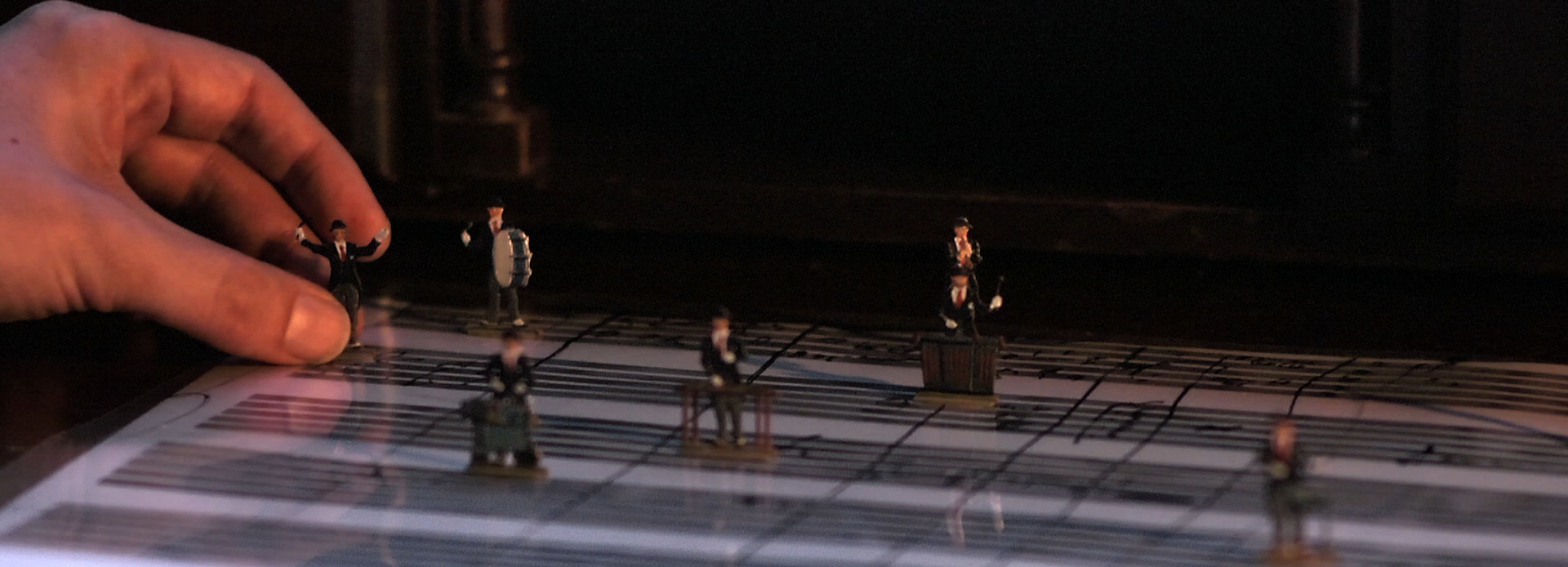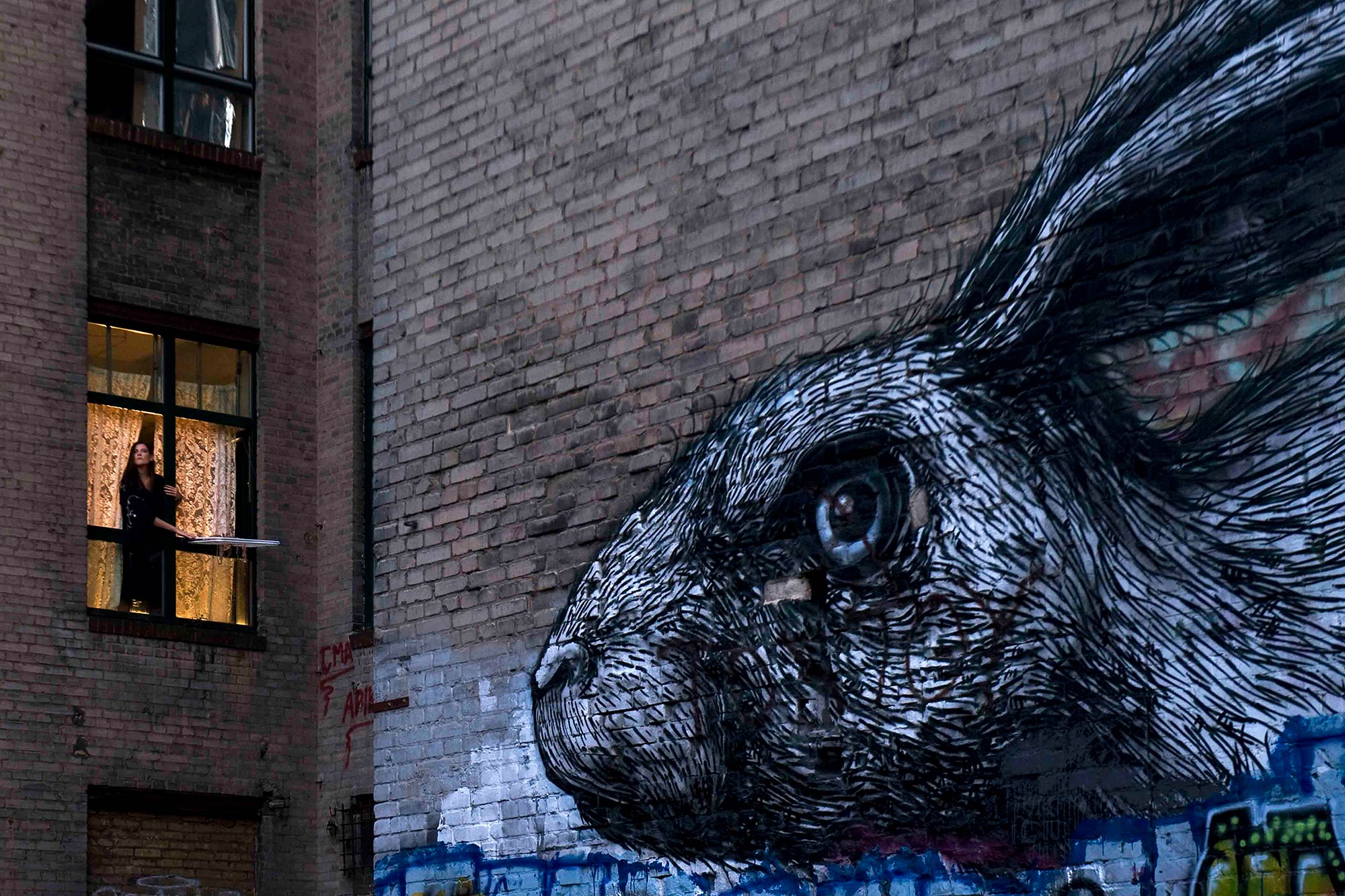„This music film is a lighthearted and clever spectacle constructed around the chamber music work by Morton Feldman. A kangaroo escapes, a conductor plays clarinet. A cellist in tears and a violin in lingerie, while a composer becomes increasingly entangled in his patterns. These are only a few of the passionate elements of this film work.“
(International Film Festival Rotterdam, 2012)
„Andreas Rochholl’s film is saturated with the music of pioneering American composer Morton Feldman. Though Feldman passed away in 1987, his work continues to inspire new experiments. Rochholl juxtaposes Feldman’s postmodern compositions with seemingly random scenes, some unspectacular, others strange. Well-versed in music and film techniques, director Rochholl ably uses both to pay a synchronous homage to Feldman’s creative work.“ (International Film Festival Wroclaw, new horizons, 2012)
Cast
Script, Director and Editing: Andreas Rochholl Camera and Director of Photography: Börries Müller-Büsching Music director: Arno Waschk Sound design: Daniel Weingarten Costume design: Sabine Gallei
Cast: Lisa Tjalve – Kanguroo / Voice, Alexander Bader – Man in the train / Clarinet, Arno Waschk – Composer / Piano, Christina Fassbender – Cook / Flute, Zoé Cartier – Woman in Kimono / Cello, Wolfgang Eger – Cook / Percussion, Simone Leona Hueber – Woman from the Milonga, Christian Banzhaf – Violone fancier, Daniel Weingarten – Man with Cello, Fiona Bennett – Hat designer
International Film Festival Rotterdam 2012, New Horizons ∙ Int. Film Festival Wroclaw 2012, Aesthetica Short Film Festival 2012, proposed for the German Short Film Award
“I was in Paris, it was early in the morning, I found myself in the Rue Furstenberg, and I had the association of Delacroix’s studio and that world. I was thinking a lot about Heine because of my situation. (I found myself more or less in voluntary exile for a few years.) And then I was writing, and in the middle of the piece I just wrote down the title: I met Heine…”. (Morton Feldman in an interview, 1971)

screenshot I met Heine on tgev Rue Fürstenberg, music film
A new closeness of visuals and sound in Music Film
For this music film seven professional classical musicians left their daily orchestra pit and made their way to search the beginning of musical yearning in situations from everydays life. Out of this, a story in six episodes arises. Only just before the end of the film the musicians – who up to this point have acted as their own characters – bring their instrumental mastery to the film.
I met Heine on the Rue Fürstenberg picks up on the roots of the »Aesthetics of whole« in the 1920s. At that time the new media film encountered composers like Alban Berg, Paul Dessau or Kurt Weill, who used film like an instrument as part of their revolutionary scores. The new media film also met visionary architects like Walter Gropius, the co-founder of the total theatre idea, who introduced film as a means of equal importance within Performing Arts, feeding as much as the other arts into the experience of wholeness in live performance.
Therefore, in his music films Andreas Rochholl is trying to create a new closeness between image and sound. According to him, if a film is aiming to intrigue the audience there is no way around fully fusing the two elements. In I met Heine on the Rue Fürstenberg O-sounds and studio recordings are interwoven in correspondence with the storyline and take both the spectator’s eyes and ears on a journey to a ›total sound-image-experience‹. Music and film in this way unfold both their unique powers and create an all-embracing space of perception. The film images accompany the spectator into a fascinating landscape of abstract sounds composed by Morton Feldman, a primary representative of the New York School.
Music Copyright Universal Edition, Wien, SCHOTT MUSIC, Mainz
Morton Feldman: I met Heine on the Rue Fürstenberg for flute, clarinet, violin, cello, piano, percussion & mezzo-soprano (1971)
Thanks to: Mona Isabelle Schroeter and Henning Klose from Tangoloft Berlin. DB Netze. Thomas Hesse and Sophia Kreller from Bahnhofsmanagment Berlin HBF. Susanna Poldauf. Pavel Jiracek. Salon Bennett and blush dessous.
